Gayle Irwin's Blog, page 31
July 11, 2014
Traveling with Your Pet: Some Important Tips
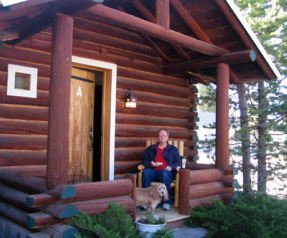 Summer is in full swing and so are travel plans for many people. From weekend getaways to long vacations, some pet owners hit the road and want their furry friend(s) to accompany them. Here are some road tripping tips for pet owners:
Summer is in full swing and so are travel plans for many people. From weekend getaways to long vacations, some pet owners hit the road and want their furry friend(s) to accompany them. Here are some road tripping tips for pet owners:Pack enough pet food as well as these items: food and water dishes, container of drinking water, bedding, leash, collar and tags, toys, a first-aid kit, litter and litter box (for travels with cats), and any necessary medications.
Make sure your pet wears a collar with ID tags with your permanent address and telephone number. You may also want to include a second tag with information regarding how you can be reached during travel.
Ensure your pet’s vaccinations are up-to-date and carry a health certificate. Also, if your pet doesn’t travel well in the car, ask your veterinarian for a prescription to keep your furry friend calmer.
Safely restrain your pet in a harness or a well-ventilated and stabilized travel kennel. Such action not only protects your special friend from injury but also keeps him from being a driving distraction.
Book hotels that are pet-friendly prior to travel. Here are a few websites that can help: www.petswelcome.com and www.travelpets.com .
Make frequent pit stops for bathroom and exercise breaks. And, don’t forget the bags to pick up messes. Make sure your pet is leashed and wearing its collar with ID tags when outside the vehicle.
Never leave your pet unattended in a parked vehicle. The temperature inside a car can rise to 120 degrees within minutes, even with the windows slightly open. Plus, an animal left alone in a vehicle is an open invitation to pet thieves.
Following these basic guidelines will help make road trips with your pet more enjoyable for all.
Happy Trails and Tails!

Published on July 11, 2014 11:50
July 1, 2014
Tips for Helping a Pet Anxious about Loud Noises
 The July 4th holiday is just around the corner, and with it comes the sparks, flashes, and booms of fireworks. Although most people enjoy watching a fireworks display, our pets may seek refuge from the thunderous noise and intense bursts of light. Sometimes that “seeking refuge” manifests itself in ripped up carpeting,
The July 4th holiday is just around the corner, and with it comes the sparks, flashes, and booms of fireworks. Although most people enjoy watching a fireworks display, our pets may seek refuge from the thunderous noise and intense bursts of light. Sometimes that “seeking refuge” manifests itself in ripped up carpeting, Do you know that many pets are negatively affected by loud noises, such as thunderstorms and fireworks? Sometimes such anxieties originate from being exposed to a sudden, loud, disturbing noise even when young that results in a lasting bad memory. The fear of fireworks may be from light flares which accompany the noise, the strong sulfur smell that comes after the explosion, or the suddenness or frequency of the noise (such as a screeching rocket).
As the July 4th holiday approaches and summer progresses with its storm activity, there are ways you can help your pet deal with its anxiety of loud noises.
Keep your pet in a confined area – it may try to escape from the backyard, therefore, keep it inside the house in a quiet area, such as the basement or a closet, with a comfortable bed and a familiar toy.
Leave a radio or CD player on with soothing music.
Consider moving fragile items and protecting furniture in case your pet shows signs of destructive behavior.
Your veterinarian may recommend anti-anxiety medication, some of which is available without a prescription .
A product called Thundershirt shows promising results. This drug-free solution, made for both dogs and cats, uses gentle, constant pressure on an animal’s torso (like swaddling or hugging) to help calm a nervous pet. What acupuncture and acupressure does for people, the Thundershirt, by applying pressure to dogs and cats, has proven to help calm them during noisy situations that can cause stress.
One or more of these ideas can help your furry friend be calmer, if s/he is prone to noise anxiety, during the upcoming 4th of July festivities and throughout the summer season as well.
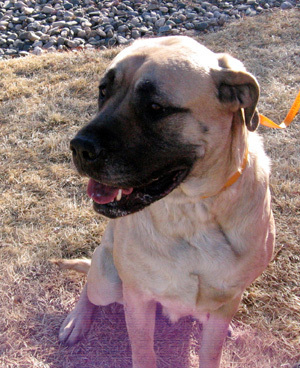
Published on July 01, 2014 17:22
June 27, 2014
Still Time to Adopt During June's Adopt-A-Cat Month!
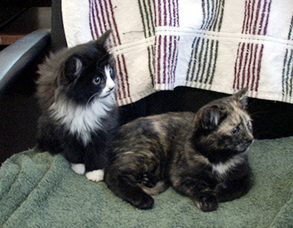 June is National Adopt-a-Shelter-Cat Month, and there is still time to find your furry feline friend!
June is National Adopt-a-Shelter-Cat Month, and there is still time to find your furry feline friend!Every summer numerous cats and kittens find themselves in shelters and rescues across the country. This is the time of year known as “kitten season” and wherever you go to adopt an animal, you are sure to find plenty of friendly felines just waiting for loving families! Some shelters are following the lead of Best Friends Animal Sanctuary in Utah and greatly reducing adoption fees; check with your local rescue, animal shelter or humane society.
And if you need a good reason to adopt a cat this month in addition to lower adoption fees, here are some reasons why adding a kitty to your clan can be a good idea:
A cat will keep you entertained with her playful antics.
A cat cleans herself – rarely do you have to bath one like you do a dog!
Cats are more independent than dogs – you can go to work daily or even take a weekend trip and not worry about how or where your cat is going to the bathroom!
A cat doesn’t have to be housebroken – using the litter box comes naturally, and most mama cats teach their kittens how to use a box very quickly.
A cat doesn’t need a lot of space, therefore, a kitty makes an excellent pet for small homes and in apartments where landlords allow pets.
A kitty doesn’t need to go outside for exercise – no walks around the neighborhood or games of catch or Frisbee; so again, it’s a good choice for apartment or condo dwellers.
Cats need minimal toys with which to be entertained, and those toys cost little money. A scratching post, a feather fishing pole, and some catnip mice work wonders for a cat’s curiosity and entertainment!
Many cats love to cuddle yet they also value their alone time – you have the best of both worlds when you get a cat!
Whether you choose an adult, a kitten, or a senior, a cat can decrease blood pressure, alleviate depression, and help combat other health issues. In fact, recent studies show that a cat’s purr lowers stress and lessens chance of heart attack in people. So, consider adopting a kitty this month – a purr-fect furry companion is waiting for you!
Published on June 27, 2014 14:05
June 5, 2014
Honoring Cody - Happy Birthday, Buddy!
 My wonderful buddy, Mr. Cody, turns 16 years old on June 10th. In honor of his special day, and the great life we've shared for more than six years, I'm dedicating this post to him. I submitted a story to Chicken Soup for the Soul a few years ago about this wonderful Cocker Spaniel, but the story didn't make the cut. So, here it is!
My wonderful buddy, Mr. Cody, turns 16 years old on June 10th. In honor of his special day, and the great life we've shared for more than six years, I'm dedicating this post to him. I submitted a story to Chicken Soup for the Soul a few years ago about this wonderful Cocker Spaniel, but the story didn't make the cut. So, here it is!My Treasure: A Gentle Dog's Persevering Spirit
He looked up from the cage, brown eyes drooping, as if he wanted to cry. Spaniels have that look, especially when confined to a 5x5 cage in a room with numerous barking, howling dogs. His russet-colored fur, and the fact he was a cocker spaniel, caught my attention, but those eyes... longing, pleading, spoke to my heart.
The director of the animal shelter told me this dog, named Cody, had been used as a stud in breeding facility, and at age 10, was dropped off because his services were no longer required; his retirement for years of service, profiting the breeder – locked in “doggie jail.” I looked at him again as the matronly manager said, “Small dogs are popular, but at his age, his chances of adoption are slim.”
Our eyes met – his and mine. I briefly reflected upon the cocker spaniel I'd had as a younger woman, the one I'd lost eight years prior. An amazing, devoted companion, that dog had been.... They resembled one another in certain ways, this “Cody” and my “Sam,” yet this dog seemed sadder than Sam had been. Of course, he'd recently been discarded, and perhaps his life prior had been no picnic. His plight, and his rejection by those in charge of his care, tugged at my heart, like harpstrings tenderly caressed. Two days later, after a neutering and a grooming, Cody came home with me. That was five years ago.
Now, nearly 16 years old, Cody's gentle spirit still prevails. Despite being discarded by his previous owners, he settled into our home and lapped up the love we've bestowed. And, he's returned it in spades! He gives what we call “Cody hugs”, standing on his hind legs (when they'll hold him) and stretching forward to lay a furry cheek against a human cheek. Though gentle and loving towards me and my family, Cody becomes the “guard dog” while my husband is away. He often lays near the front door, keeping vigil, ever watchful for those who may try to harm me. He barks at noises and at people, inside the house and outside, alerting whoever or whatever that a dog guards this home and its people!
Cody's persevering spirit has also been vigilant these past few years. His arthritic body causes him to move much more slowly, and somewhat unsteadily, but, move he does: down the block for short walks, through the house to see where I'm at, through the pine-covered forest of our summer cabin property, up and down stairs of our home in town. Those movements are more greatly hindered, however, from a torn ACL three years ago. But, you can't keep a good dog down! He may be slow and unsteady, but he is also persistent, and he doesn't want to miss out on jaunts through the woods or around the block – he doesn't want to miss out time with his people! Those sojournings may be short, but, especially at the mountain property, they are many, for, even at 15 years of age, my persevering little cocker spaniel enjoys smelling for birds, squirrels, and other creatures of the forest – and I am happy to oblige him!
Four years ago an outing to the cabin resulted in a near catastrophe. That summer we had a major infestation of moths in the area, and Cody attempted to eat as many as he could. Like a vacuum cleaner, he sucked them up, and for the remainder of the night, he drooled like a St. Bernard. By morning, he was weak and dehydrated and we rushed him to the vet. Diagnosed with an auto immune disorder a few years prior, Cody's internal organs nearly shut down from the bacteria obtained from the moth invasion to his innards. He was hospitalized for nearly three days. Once again his persevering spirit kicked in... and he no longer eats moths!
Cody's aging, his health setbacks, and his gentle yet protective nature inspire me. As I age and experience setbacks in health, finances, or other aspects of life, I look no farther than the cocker spaniel I adopted more than five years ago to discover encouragement. His russet coat has now faded to tan with speckles of white, much like my chocolate hair is woven with silver. Yet, he doesn't let age or health deter him from his course – preserving through life gently, with dignity, love and loyalty, Cody inspires to me age gracefully as well. Instead of a bitter, back-thinking spirit of “what if's” and “why nots,” I need to be more grateful for the here and now... just like Cody. Oh, he could lay on a blanket in the corner bemoaning the fact he can't walk as far or that his former owners rejected him, just as I could lay in bed cursing my arthritic knees and those who rejected me in my past. But, Cody doesn't let the physical pains of today or the emotional pains of yesterday keep him from opening his heart to the joys of love and companionship of here and now. Neither should I.
A wise person once wrote, “Lord, help me to be the person my dog thinks I am.” That is my prayer as well, thanks to a russet-colored cocker spaniel with sad, longing eyes. The discarded trash of that breeder has become my pot of gold... er of tan, and he is quite a gentle, persevering treasure!
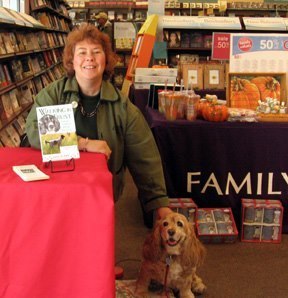
Published on June 05, 2014 15:39
May 24, 2014
Don't Litter - Spay Your Critter!
 Although spring seemed to delay its arrival, summer is now just around the corner. With this time of year often comes the evidence of littering – litters of puppies and kittens that is. What will happen to all of these little ones, and the ones that will be born later this year and the ones born to those youngsters also not spayed? Will each one find a special home? Doubtful.
Although spring seemed to delay its arrival, summer is now just around the corner. With this time of year often comes the evidence of littering – litters of puppies and kittens that is. What will happen to all of these little ones, and the ones that will be born later this year and the ones born to those youngsters also not spayed? Will each one find a special home? Doubtful.Nearly four million dogs, cats, puppies and kittens are euthanized in animal shelters every year, and for every person born in the United States, there are seven puppies and kittens born. An unspayed female cat and her offspring can contribute several thousand additional cats in a lifetime. Animal shelters and rescue organizations become overwhelmed with the number of puppies and kittens brought to them. There is one simple solution: spay or neuter your pet!
Many myths exist about spaying and neutering, and most are just that: myths. Here are some facts about pets that are spayed or neutered:
They tend to be better behaved.
They tend to be more affectionate.
Spayed females don’t attract unwanted, aggressive males nor do they exhibit the nervous behaviors from hormonal changes and cry piteously waiting for a mate.
Neutered males are less likely to mark territory (such as your couch!) and they are less likely to roam.
If you have concerns about the surgery and its affect upon your pet, discuss these with your vet. No one is more knowledgeable about surgical procedures and the pros and cons of spaying and neutering than your veterinarian.
Cesar Milan, the nationally-recognized and respected “Dog Whisperer”, debunks many spay and neuter myths on his website: http://www.cesarsway.com/tips/basics/spay-and-neuter-myths .
To learn more about spaying and neutering myths and facts, visit
http://www.humanesociety.org/issues/pet_overpopulation/facts/spay_neuter_myths_facts.html
Lack of homes and pet overpopulation is a serious national, regional, state and community problem –so let’s fix the problem by fixing our pets! Remember the motto: Please don't litter, fix your critter!
Published on May 24, 2014 13:04
March 19, 2014
So You're Thinking of Getting a Dog? Tips for Families
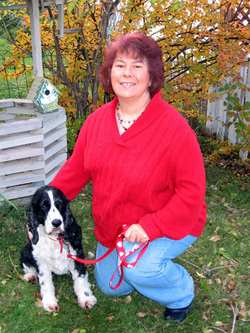 You've probably seen the TV ads: sorrowful eyes staring out from cages. You've heard the plea: help shelter pets. You may have even heard the longing in your child's voice: “Can we PLEASE get a dog?!” All pluck at your heart like a harp string, making you seriously consider adding a dog to your household.
You've probably seen the TV ads: sorrowful eyes staring out from cages. You've heard the plea: help shelter pets. You may have even heard the longing in your child's voice: “Can we PLEASE get a dog?!” All pluck at your heart like a harp string, making you seriously consider adding a dog to your household. But, you have questions – good for you! Your pondering shows responsibility, and that’s crucial of a dog owner. What else?
Responsible Adoption
NEVER get a dog on impulse! CONTINUE READING BY CLICKING HERE - GUEST BLOG POST AT CIRCLES OF FAITH!
Published on March 19, 2014 05:43
March 1, 2014
Pet Safe Ice Melts
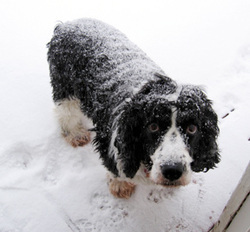 With Old Man Winter still hanging on big time where I live as well as in much the United States, people still to keep ice melt on hand to keep sidewalks and driveways from becoming a leg or back-breaker. However, many of these products are harmful for pets – ice melt can get in between toe pads of paws and burn an animal's feet, or, if ingested while licking feet, can be poisonous, even deadly. What's a person living in the sub-Arctic to do?
With Old Man Winter still hanging on big time where I live as well as in much the United States, people still to keep ice melt on hand to keep sidewalks and driveways from becoming a leg or back-breaker. However, many of these products are harmful for pets – ice melt can get in between toe pads of paws and burn an animal's feet, or, if ingested while licking feet, can be poisonous, even deadly. What's a person living in the sub-Arctic to do?There are many pet-safe ice melt products on the market, or at least safer than other ones. A short list includes Safe Paw, Morton Salt Safe-T Pets, Safe Step, and Paw-Thaw (biodegradable and less harmful to vegetation, according to the company's website). Eco Traction is another product that, not necessarily an ice melt, helps provide traction on icy surfaces – an environmentally friendly product, its made of volcanic material that doesn't corrode or damage surfaces and can be used in the spring on gardens. Click on the links associated with each product name to go directly to the companies' websites.
Government entities do not regulate ice melt products, so pet owners are encouraged to read the ingredient lists carefully. Many contain fertilizers and often salt; not all fertilizers are safe for pets. Also read warnings on the product label – if it will damage stone or concrete surfaces, then it will probably irritate your pet’s feet (at a minimum).
Learn more about some of these products, including opportunity to view Material Safety Data Sheets (MSDS) at http://www.examiner.com/article/a-list-of-pet-safe-ice-melts.
Winter must come to an end sometime, however, it seems like it's staying around awhile. Therefore, protect yourself, your family, and your pets during these icy conditions by using some of the suggested products on the ice build-up around your home.
Published on March 01, 2014 09:01
February 18, 2014
The Ragdoll - A Relaxed, Friendly Cat Breed
 In 1990 I adopted a lovely two-year-old orange and white longhaired cat. Her name was Ama and when she came home with me I didn’t change her name – nor did I ever find out why she was christened so. Her elderly owner had passed away and she was brought to the Bozeman (MT) Humane Society. Her round face and elegant coat gave her a royal look – she didn’t belong in a small cage. As I neared her little prison, she reached a paw out to me, like a damsel in distress. Ama graced my home for more than 15 years, passing in 2006 at age 18 from kidney failure.
In 1990 I adopted a lovely two-year-old orange and white longhaired cat. Her name was Ama and when she came home with me I didn’t change her name – nor did I ever find out why she was christened so. Her elderly owner had passed away and she was brought to the Bozeman (MT) Humane Society. Her round face and elegant coat gave her a royal look – she didn’t belong in a small cage. As I neared her little prison, she reached a paw out to me, like a damsel in distress. Ama graced my home for more than 15 years, passing in 2006 at age 18 from kidney failure.When my friend Cindy Cartier visited a few years after I adopted Ama, she picked up my light-weight kitty, and exclaimed, “She’s a ragdoll! Or part ragdoll anyway.” I replied, “No, she’s a cat.” That’s when I got an education on an amazing breed of cat.
Ragdolls are known for their docile, relaxed, and loving personalities. They go limp in one’s arms, hence the name. That’s what Cindy noticed first about Ama – her placid body and quiet demeanor. This breed of cat is very affectionate and does well with children and other pets. Ragdolls are known to be especially good with dogs – that’s something else about Ama: she and my cocker spaniel, Sam (whom I also adopted from the Bozeman Humane Society) got along incredibly well; they often lay on the couch side by side and never once had a spat. Ragdolls are like dogs in many ways, including the fact they can be taught to fetch and sometimes come when called.
Another trait of Ragdolls that manifested in my adopted girl is the fact they often walk on a leash. When I first brought Ama home, I didn’t want her outside on her own, but I also didn’t want to keep her cooped up during the warm, sunny summer. So, I thought I’d leash-train her. I didn’t have to – she either already had been trained or it was simply instinctual – she walked wonderfully well and never minded the leash. We had fun strolling the neighborhood for many years.
Female ragdolls are small, often five pounds or less – that was Ama, too; even as a spayed female she rarely weighed above six pounds. Altered males, however, grow quite large, up to 20 pounds in some cases.
This is a playful as well as friendly breed. They enjoy the company of their humans, sometimes following them through the house and greeting them at the door. They also enjoy toys and playtime with people, and they are great cuddlers on the couch or in bed.
The breed’s fur is quite soft, almost rabbit-like in texture. Though most have a medium-length coat and some shedding occurs, these cats require minimal grooming – a regular combing generally suffices. Their fur is easy to pick up and a damp hand or cloth will lift most Ragdoll fur from your clothes.
Coat colors are often light, and, similar to Siamese, feature points (face, ears, tail, and feet) of blue, chocolate, seal, lilac, red, and cream. Ama may have been considered having red points, but her entire body mingled orange and white, therefore, she would not have been a purebred Ragdoll. The breed is also noted for its deep blue eyes, again like the Siamese, and again, this is how Ama differed – her eyes, though striking, were a deep amber color. View photos of Ragdolls at http://www.rfci.org/info/color_pat/index.php.
According to Ragdoll Fanciers Club International, the breed developed by Ann Baker during the 1960s in California, a product of Persian and mixed breeds. The Ragdoll was recognized as a purebred in 1965 and has become a fast-growing, beloved cat breed. Learn more about Ragdoll cats at http://www.cfa.org/Breeds/BreedsKthruR/Ragdoll.aspx.
If the Ragdoll is a cat breed that intrigues you, remember the shelters and rescues first – think adoption. Go to www.petfinder.com and type in the breed name and your zip code – you’ll find a list of Ragdoll cats (or another breed you’re considering) and what shelter or rescue has them available for adoption. You’ll discover a treasure in a Ragdoll you adopt, just as I did nearly 25 years ago.
Published on February 18, 2014 08:25
February 8, 2014
Keep Your Pets Healthy and Happy with Good Food Choices
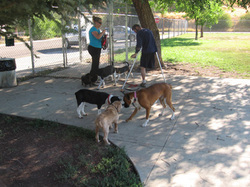 The dawning of a New Year results in resolutions by people to eat healthier and get into better shape. Although many often break those declarations before month-end, perhaps you and your pet can become healthier together, thereby sticking to your resolution and helping your pet stay healthier and happier in the process.
The dawning of a New Year results in resolutions by people to eat healthier and get into better shape. Although many often break those declarations before month-end, perhaps you and your pet can become healthier together, thereby sticking to your resolution and helping your pet stay healthier and happier in the process.Just as people need nutritious foods to keep them healthy, so do our pets. Just as there are a wide variety of foods we can choose to eat or not, so, too, are there many types and brands of foods from which to choose for our pets. Whether you go to your vet’s office, shop at a grocery or big box store, or buy your pet food from a pet supply store, you are bombarded by the many flavors, brands and special diet foods. With the numerous options, it can seem overwhelming to tackle the question, “What should I feed my pet?”
Pet food recalls make pet lovers recoil and question what companies to trust and what those companies are putting into our pets' food. The best way to combat doubts and questions is to research. Look at the brands in the store and discuss with the store staff. Inquire of trusted friends who are pet owners what they feed their animals, and of course, talk with your vet, especially if your dog or cat has a health issue, such as diabetes. Then, get on the Internet and read about the company from their website as well as learn more about pet food from the Association of American Feed Control Officials ( http://www.petfood.aafco.org/ ). Ask your pet food supplier for samples to try as you learn what food is best for your furry friend.
You can read the labels, however, the order of ingredients on a pet food label is often based on the precooked weight (water and its contributing weight), not on the finished product weight. For example, if chicken is listed as the first ingredient, which we all think is good thing, how much chicken is really in the kibble? Processing chickens to create dry dog and cat food takes the moisture out of the meat and carcass. What is the percentage of chicken actually in the product – 10 percent, 25 percent, 40 percent, more than that? How much corn meal or wheat does the product contain? Some pets are allergic to wheat and corn. Are there synthetic vitamins and minerals in the food? Pets cannot always completely digest synthetic materials. And where is the food processed? Remember the pet food recall involving melamine and China in 2007?
In addition to food selection, here are a few other tips to keeping your pet healthier and happier this year:
Providing your furry friend with exercise. Perhaps you and your dog can take more walks together, become running partners, or get involved with the local agility club – or simply conduct agility in your own backyard. Cats, too, need exercise, so provide tunnels, climbing posts, and toys to help keep them active. Wiggling a feathered “fishing pole” may not seem like much exercise, but having your feline chase the feathers around the room keeps your kitty alert and agile. Animals need stimulation, and exercise not only stimulates them physically, but mentally as well.
Make sure your pets are current on their vaccinations. If your animal encounters another dog or cat that is not vaccinated against distemper, for example, you may end up with a much larger vet bill than if you had kept your Fido or Fiona’s vaccinations up-to-date. Plus, the emotional stress on both you and your pet should your friend become ill is also a significant factor to consider.
So, as the New Year cements iteself and the months roll on, if you’re pondering a healthier you, also think about a healthier pet. Together, you just might keep that resolution to be healthier, and therefore, happier!
Published on February 08, 2014 15:48
January 19, 2014
AKC Recognizes New Dog Breeds Prior to Westminster
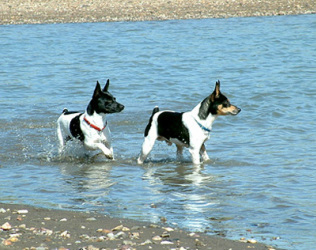 The Westminster Dog Show takes place next month, and in anticipation of the big event, the American Kennel Club (AKC) has recognized three new dog breeds for competition: the Chinook, the Rat Terrier, and the Portuguese Podengo Poqueno.
The Westminster Dog Show takes place next month, and in anticipation of the big event, the American Kennel Club (AKC) has recognized three new dog breeds for competition: the Chinook, the Rat Terrier, and the Portuguese Podengo Poqueno.The Chinook is an American dog breed. Originally bred as a sled dog by musher Arthur Treadwell Walden of New Hampshire, this rare breed makes an excellent family pet. Walden bred a farm dog of unknown heritage with a “northern” husky, possibly from Greenland, producing a litter of puppies with tawny coats. One of those pups, named Chinook, grew up to father a dog breed that not only had his physical characteristics but also his gentle disposition. A team of Chinooks transported supplies for Admiral Richard Byrd’s trek to Antarctica in 1927. The calm and dignified Chinook generously dishes out affection on family members and is known for its love of children. This breed is also known for its thick, tawny-colored double coat and amazing athletic ability. The Chinook needs lots of daily exercise – when bored it can be quite destructive and won't be entertained by lounging on the couch. These dogs thrive at dog sports, including sledding and agility, herding, and obedience and make great companions for active families. Chinooks stand 22 to 26 inches tall, weigh 50 to 90 pounds, and live 12 to 15 years. In 1965, the breed was considered the most rare type of dog in the world. Still uncommon, this state dog of New Hampshire seems to be making a comeback.
The Rat Terrier is also an American dog breed. His ancestry includes the Smooth Fox Terrier, the Italian Greyhound, Miniature Pinscher and Beagle. An all-purpose farm dog, this breed was used to kill rats and hunt small game. Like many of its terrier cousins, the Rat Terrier is smart and active, which means it needs plenty of exercise and mentally-stimulating activities – if not provided these things, the Rat Terrier can be quite destructive. Engaging in dog sports like agility and flyball will keep this energetic little dog stimulated mentally and physically. This breed is calmer than other terrier breeds and enjoys lap time with its people. Smart and fun-loving, the Rat Terrier likes to be involved and can be prone to separation anxiety. Therefore, early training and plenty of socialization is required for this breed (and its owner) to be happy. Rat terriers come in two sizes: miniature (10 to 13 inches at the shoulder) and standard (13 to 18 inches tall). They weigh between 8 to 25 pounds and can live 12 to 18 years. These small dogs can be big chewers. They are also known to be barkers and diggers. Plan to use a dog crate, tall baby gates and exercise pens for this breed. Because of their friendly disposition, rat terriers can make great therapy dogs.
The Portuguese Podengo is a sighthound originally bred to hunt rabbits in packs. This breed comes in three sizes and two varieties: the smooth, with a short, dense coat, and the wirecoat, with a medium-length, rough coat. Originating from Portugal, this breed resembles the Pharaoh Hound, Ibizan Hound, and Cirneco dell Etna, and is probable that all of these breeds share the same ancestry. The AKC registered the Podengo as part of the Hound Group. An alert dog, the Podengo makes an excellent watchdog. But, be aware: it likes to chase other furry creatures, and that would include the family cat! This breed can jump very high as well as straight up, therefore, insure you have a very tall fence if you get one of these dogs. Height sizes for these dogs are 8 to 12 inches, 16 to 22 inches, and 22 to 28 inches at the shoulder; weights are 8 to 14 pounds, 35 to 45 pounds, and 44 to 66 pounds. These dogs generally live 10 to 14 years. Well-muscled and extremely athletic, they need of regular exercise and excel at agility and lure coursing. Podengos can also do well in obedience and tracking.
As another season of Westminster rolls around, it will be interesting to watch these new breeds in the ring and see how they fare during the upcoming competition, February 10 and 11, 2014.
Photo credit: American Kennel Club
Published on January 19, 2014 19:04



